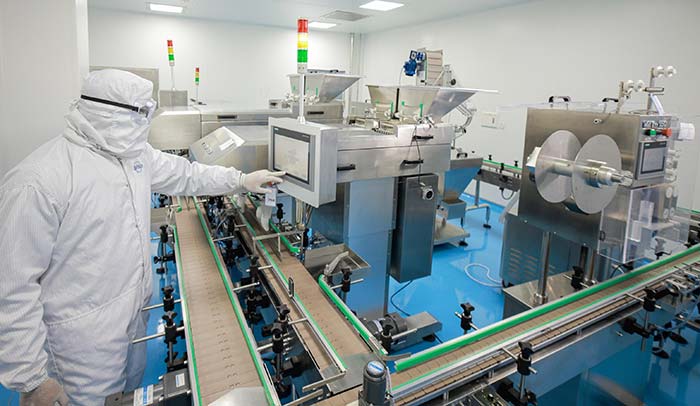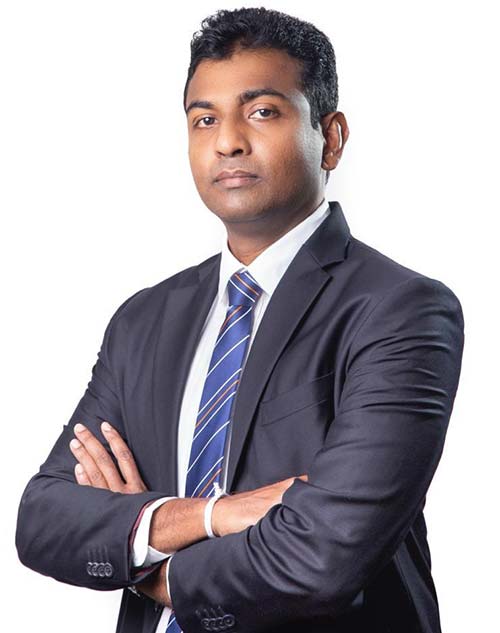Morison gearing to re-shape pharmaceutical industry in SL by 2030
It may be a long journey ahead, but we are going to accomplish it with the support of our science-driven, passionate, young team employed at our pharmaceutical manufacturing plant in Homagama, Dinesh Athapaththu, MD at Morison PLC told the media recently.
He said so while addressing a media roundtable at the LKR 4 billion worth state-of-the-art pharmaceutical manufacturing plant operating with minimum human involvement and maximum automation.
“We have embarked on a journey upstream of changing the landscape of the pharma manufacturing industry in Sri Lanka in order to make premium healthcare affordable for everyone,” he said.
“Healthcare is in the news for all the wrong reasons. Some Sri Lankan companies like Morison are trying to take the pharmaceutical industry to the next level after decades of stagnation. However, it is not receiving positive media attention, and therefore, the general public of the country as well as many doctors don’t know what Morison is doing to make this crucial investment work for Sri Lanka.
It has been more than three years since we made this investment and most of our resources still go into product development. Sri Lanka commenced pharmaceutical manufacturing in 1959, but it is still manufacturing just 15% of the national requirement whereas our neigbouring countries are far ahead of us in national supply volumes and export volumes.
“India, Pakistan, Bangladesh and Sri Lanka commenced pharma manufacturing in the 1950s which means pharma manufacturing in these countries got off the ground around the same time in history. In Sri Lanka, that feat was achieved by J.L Morison Son & Jones (Ceylon) PLC. Their facility at Aluth Mawatha, Mutwal became one of the pioneers of generic pharmaceutical manufacturing in Sri Lanka. However, 65 years on, Sri Lanka is still producing only 15% of its national medicine requirement whereas India is self-sufficient plus USD 20 billion worth exports, Bangladesh 95% self-sufficient plus exports worth USD 3 billion, Pakistan 70% self-sufficient plus exports worth USD 5 billion.

“Sri Lanka’s total pharmaceutical market is estimated at about USD 600 million where 40% of that drugs value is dispensed through government hospitals while 60% is dispensed by private pharmacies. Only 25% of the total 15% locally manufactured pharmaceuticals are dispensed by the government. Most local manufacturers focus on supplying this 25% requirement to the government.
On the other hand, in the private market where doctor-prescribed brands are sold, the locally manufactured products have only a 5% market share, meaning 95% of the products sold in the private market are imported drugs. Having studied this, Morison decided to try and change things around even at this late stage by becoming a manufacturer of branded drugs of international standards in addition to being a bulk generic supplier to the government.”

“Before we built the new plant in Homagama, we went to India and Pakistan to see the pharmaceutical plants there. We realized that we have an issue with the absence of high quality plants in Sri Lanka to go out and promote our products among doctors and private pharmacies. It was evident that we needed to bring high quality pharma manufacturing standards into the country in order to be able to manufacture drugs of the highest quality, safety and efficacy standards such as EU GMP. So we made a bold investment of LKR 4 billion to build this plant. We have been running the plant in compliance with WHO GMP (Good Manufacturing Practice) and EU GMP standards.”
‘Morison decided to take a long term view of this industry and enter the private market, without solely depending on government supplies which could be subject to policy changes from time to time. Therefore, our committed mission now is building a credible pharmaceutical brand which can readily compete with reputed imported pharma brands built on a patient-centric approach.”
“Indian pharma is in a good position today after about 60 -65 years’ of dedication. In Sri Lanka, proper pharmaceutical manufacturing has not significantly evolved. So we have to make necessary changes to transform this industry. For that, primarily we need to take a long term view of sustainable growth and subsequently about the return on investment. Our shareholders are being patient and supportive of our strategy.
We need to attract a lot of qualified young people into the industry to come and work because they will grow with the industry as we are gearing to make a notable impact in the pharmaceutical industry in Sri Lanka. be the best pharma brand in Sri Lanka by 2030, and effectively compete with foreign brands. At our Homagama factory, the average age of our workforce is around 30 years. The beauty of that is; in ten years, the most qualified Sri Lankan pharmaceutical manufacturing personnel will be around 40-years old,” a confident Dinesh said.
J.L. Morison Son & Jones (Ceylon) PLC was acquired by Hemas Holdings PLC in 2013, and today it is re-branded as Morison, retaining a sense of that historical legacy.
Morison’s Homagama manufacturing facility at present manufactures five drugs and has developed about 26 drugs out of which 10- 12 are in NMRA for registration and the rest are to be submitted for registration.
Morison is planning to submit for accreditation for their Homagama facility once it fulfills the complex European procedures, after which Morison’s products will have easier access to lucrative foreign markets, thereby earning much needed foreign currency for Sri Lanka.
Source – https://island.lk/morison-gearing-to-re-shape-pharmaceutical-industry-in-sl-by-2030/



